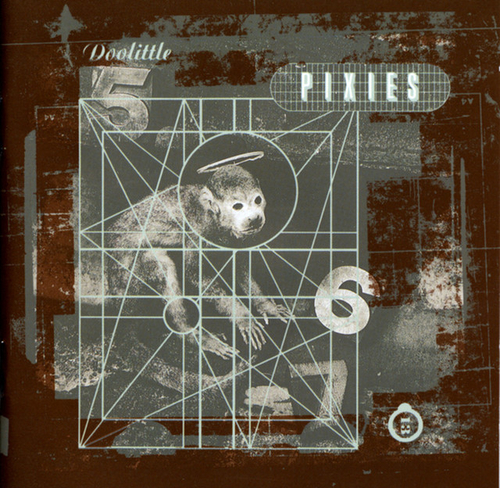FEATURE:
Major Dudes and the Game of Love
ALL ALBUM COVERS: Getty Images/Spotify
Albums with a Stunning Three-Song Run
__________
IS there a magic formula when it comes...
to classic albums and their brilliance? Is it something to do with the time they were released or is it the order of the songs? I wonder whether it is certain boldness or something more personal. Whilst some iconic albums have a couple of epic songs together, there are records that have a hat trick of consecutive numbers that take you by surprise. I have been listening to some brilliant Steely Dan albums and when listening to their finest moment, Pretzel Logic, the first three tracks got back into my head. This piece is not just about the first three tracks of albums: there are many where the run of three comes in the middle or the end. I think opening a record with three stunning songs is the trickiest thing to do and most impressive. It is hard to hook people in and keep them invested so, when you have a golden opening three then that is going to do the job! 1974’s Pretzel Logic starts with Rikki Don’t Lose That Number and is followed by Night by Night and then Any Major Dude Will Tell You. The reason these three songs start out is because of the change of mood and consistency. We go from the slow-building and sublime to the more energised and raucous; over to something more emotive and deep. It is a perfect trio of songs and covers a lot of ground. I love all Steely Dan albums but Pretzel Logic has these wonderful three songs opening things.
I do not think it is the case that every iconic album has a run of three terrific songs. Often, there are a couple and then one weaker. Modern music is less about the album and more about the single so, in some ways, it is even rarer wowing people with a straight run of awesome tracks. There are a lot of discussion boards and pages that ask the question regarding the best run of three terrific songs. The A.V. Club joined the conversation and they mentioned an album that stands in mind: Michael Jackson’s Thriller. It might be bad and dangerous mentioning his music given Jackson’s current reputation and standing but one cannot deny Thriller’s powerhouse 1-2-3 of Thriller, Beat It and Billie Jean. That album is a masterwork of programming that starts out epically with Wanna Be Startin’ Somethin’ and then dips down a bit by the time we get to the third track, Baby Be Mine. That unbeatable 1-2-3 then arrives and, in fact, the fourth track in the run, Human Nature, keeps the quality genius-high. It is only the final two tracks, P.Y.T. (Pretty Young Thing) and The Lady in My Life that take the energy away. Jacko was pretty savvy when it came to the big albums and having three tops tunes alongside one another – look at Bad’s Dirty Diana, Smooth Criminal and Leave Me Alone and Dangerous’ In the Closest, She Drives Me Wild and Remember the Time.
Just because a band/artist is legendary does not mean all their albums have examples of a three-song blitz. The Beatles are classic examples but, when adding to this conversation, two albums definitely have a rock-solid hat trick that take your breath away! Revolver’s opening three – Taxman, Eleanor Rigby and I’m Only Sleeping – have songs from George Harrison, Paul McCartney and John Lennon alongside one another and kick-starts their best album (debatably) in wonderful style! Strangely, I think it is Rubber Soul’s 1-2-3 of Girl, I’m Looking Through You and In My Life that tops Revolver’s examples. As a massive Kate Bush fan, few albums can beat Hounds of Love’s awesome opening trio of Running Up That Hill (A Deal with God), Hounds of Love and The Big Sky. There are some albums that had ample ammunition on them but missed out on a run of three brilliant tracks due to some poor programming decisions. Consider Madonna’s Like a Prayer and the fact it opened with Like a Prayer and Express Yourself. We could have had Cherish after Express Yourself but, instead, there was the week Madonna/Prince collaboration, Love Song. A lot has been said about The Rolling Stones’ 1970s work and the fact they were brilliant when it came to three consecutive masterpieces on an album. I am not too sure and do think that there are few examples where that is true. The Beatles did it a couple of times but David Bowie did it more than once.
The Rise and Fall of Ziggy Stardust and the Spiders from Mars has Soul Love, Moonage Daydream and Starman on it and, in terms of a great run of three songs, few albums can beat that! Beastie Boys’ Paul’s Boutique turns thirty in July and I think it sports an awesome 1-2-3: To All the Girls, Shake Your Rump and Johnny Ryall is a pretty sweet way to open up their second album – at a time when they needed to prove the critics wrong and establish themselves as major players! Personally, I love the trio of Help Me, Free Man in Paris and People’s Parties from Joni Mitchell’s Court and Spark; the brilliant run of Mr. Tambourine Man, Gates of Eden and It’s Alright Ma (I’m Only Bleeding) from Bob Dylan’s Bringing It All Back Home. Blur’s Parklife just turned twenty-five but I think another of their albums, Blur, that has Beetlebum, Song 2 and Country Sad Ballad Man opening things – quite a diverse and dizzying triple when you think about it! BBC Radio 6 Music posed the same question I (and many others) posed regarding that perfect run of three songs here. When looking at it, three classic artists came to mind: Prince, Fleetwood Mac and Paul Simon. One of Prince’s finest albums, Purple Rain – perhaps his absolute best! -, has the incredible Darling Nikki, When Doves Cry and I Would Die 4 U on it – even though Darling Nikki ends side-one and the other two tracks open the second side.
Think about Fleetwood Mac’s Rumours and, technically, you could say the entire album is flawless – you could choose any run of three songs and you’d be right! I think the run of tracks from Dreams (the second song on the album) to Don’t Stop – with Never Going Back Again in the middle – is the perfect consecutive trio on that album. It is Paul Simon’s Graceland that, I feel, can rival the like of Michael Jackson’s Thriller and Steely Dan’s Pretzel Logic for that sense-opening run of three tracks. It may be controversial but I think the opening three tracks on the album is the best run. I Know What I Know (the third track) might not be as strong as The Boy in the Bubble and Graceland but I think the combination works wonderfully. That brings to mind another question: Is a brilliant run of three defined by the weight of each track or how they work in combination with one another? There is no denying the potency and intent of The Boy in the Bubble and Graceland kicking off the album but, if Homeless or You Can Call Me Al had followed those two, would we have had a weaker album? The sequencing is just so and I feel the somewhat quirky I Know What I Know works better following The Boy in the Bubble and Graceland than any other mixing of three. Debaser, Tame and Wave of Mutilation is a pretty beefy 1-2-3 and is a reason why Pixies’ Doolittle is such a wonderful album!
A lot of the albums I have mentioned are fairly old and few of them are from the last thirty years. If you want any released in the twenty-first century then how about Radiohead’s Kid A (2000) and the run of Kid A, The National Anthem and How to Disappear Completely (tracks two-four)? Few mention the genius running through Amy Winehouse’s Back to Black of 2006 and that marvellous run of three that is Back to Black, Love Is a Losing Game and Tears Dry on Their Own?! There are few albums from the past twenty years that have such fine sequencing. These three songs are right in the middle of the album and, above them, there is Rehab and You Know I’m No Good; below them is Some Unholy War and Addicted. It is a classic case of making an album phenomenal by ensuring the track order is right and the emotional balance is flawless. The last couple of albums I wanted to mention are Led Zeppelin’s Physical Graffiti and Carole King’s Tapestry. The former has the insane Houses of the Holy, Trampled Under Foot and Kashmir forming the second side; the latter opens with I Feel the Earth Move, So Far Away and It’s Too Late. Everyone will have their own views as to which album has the best run of three songs. I wonder if modern artists bare this in mind when they record an album and think about the sequencing. You might have an album overflowing with brilliance but, if you put the tracks in the wrong order or do not have a run of three top-notch songs then it creates a different reaction and effect than an album that has that faultless run of three. Maybe you will agree with my nominations and favourites but it would be good to know which other albums spring to people’s minds when they consider that…
AMAZING three-song run.

























































































































































































































